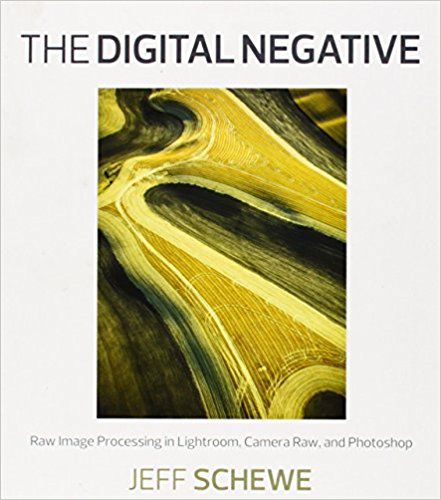
The Digital Negative by Jeff Schewe, published by Peachpit Press, ISBN: 13 978-0-321-83957-2.
I have just read this book to try to get a better understanding of digital photography. Schewe is a photographer who has also been working with the boffins at Adobe since the early 1990’s to help develop RAW, Photoshop and more recently Lightroom for photographers from a photographer’s point-of-view. His books are therefore as close as you can get to finding a first class knowledgable author. He has published two books ‘The Digital Negative’ and “The Digital Print’ the later I have just began to read.
The Digital Print briefly covers the basic background of how the digital image is made in the camera but drills in to the featured and functions in both RAW and Lightroom that you will use to process your RAW file in to a presentable photo. This includes a recommended and sensible workflow, background information from the Adobe engineers explaining why certain features work the way they do. Chapters 4 and 5 a dedicated to Photoshop for advanced editing beyond the capabilities of RAW and Lightroom for those images worth the extra effort. Chapter 6 covers the recommended workflow from importing pictures from the camera, storing, backing-up, making copies, cataloguing on to developing. This book does not however cover printing as this is a topic for his second publication.
This is a good book to read, I learned a few new features in Lightroom that I was unaware of and also instructed me in the use of RAW that I am unfamiliar with as I have only used Lightroom so far. Lightroom was was developed with a lot of the features from RAW and both will talk to one another but changes made in one will alter the other’s parameters and this is a useful thing to be aware of if you use both RAW and Lightroom. If you want a better understanding of Lightroom, RAW and Photoshop this ids the book to read. This is not however a detailed book for Photoshop it covers the topics that most photographers need but doesn’t look at all the magic tricks possible in Photoshop. This is a book intended to help the modern photographer become confident and proficient developing digital photographs to a point that they can print or advance to higher levels of editing using Photoshop and plug-ins. Not too technically challenging and easy to read and fairly easy to understand without an engineering degree.
A very good book that I would recommend.



